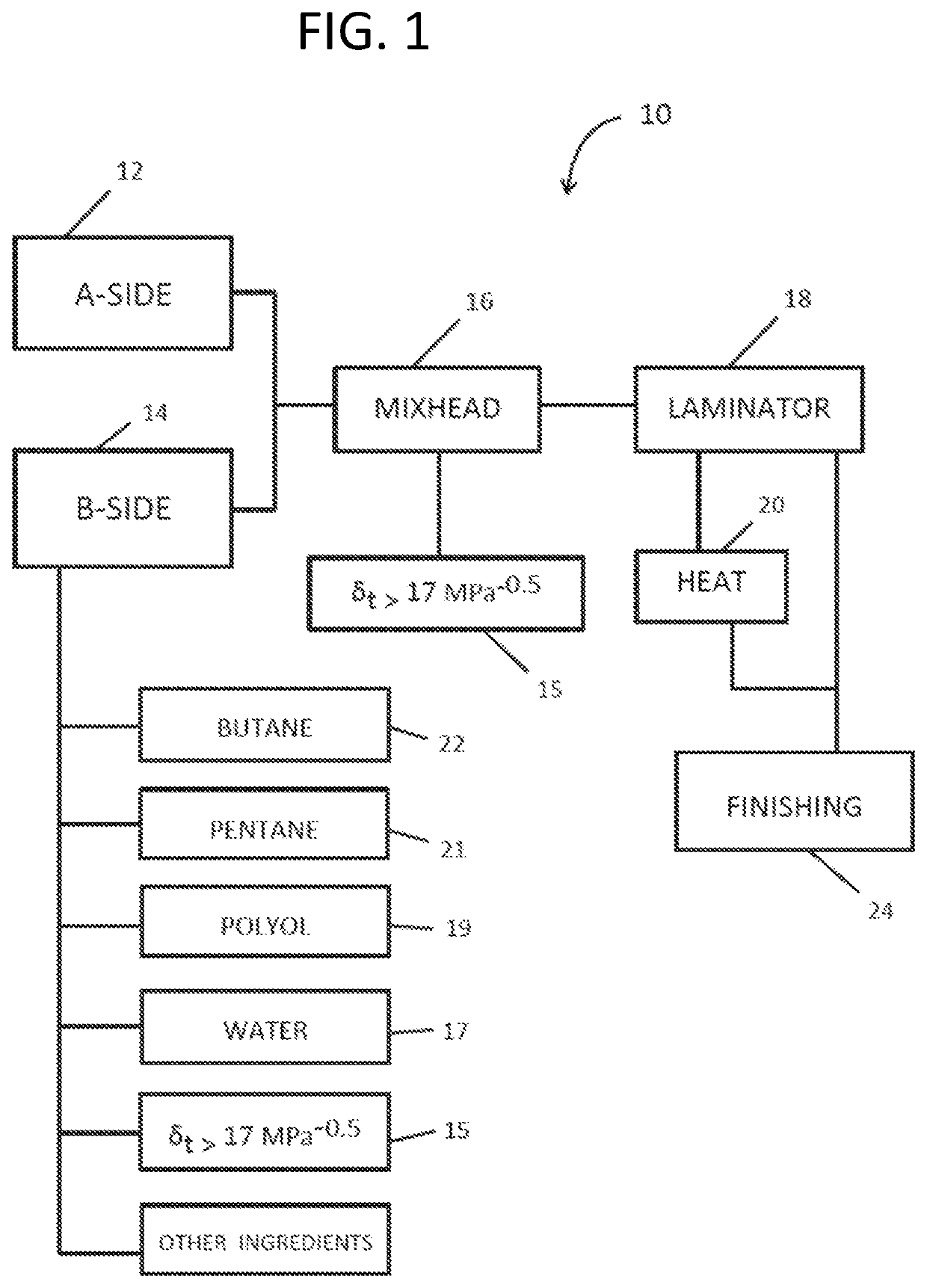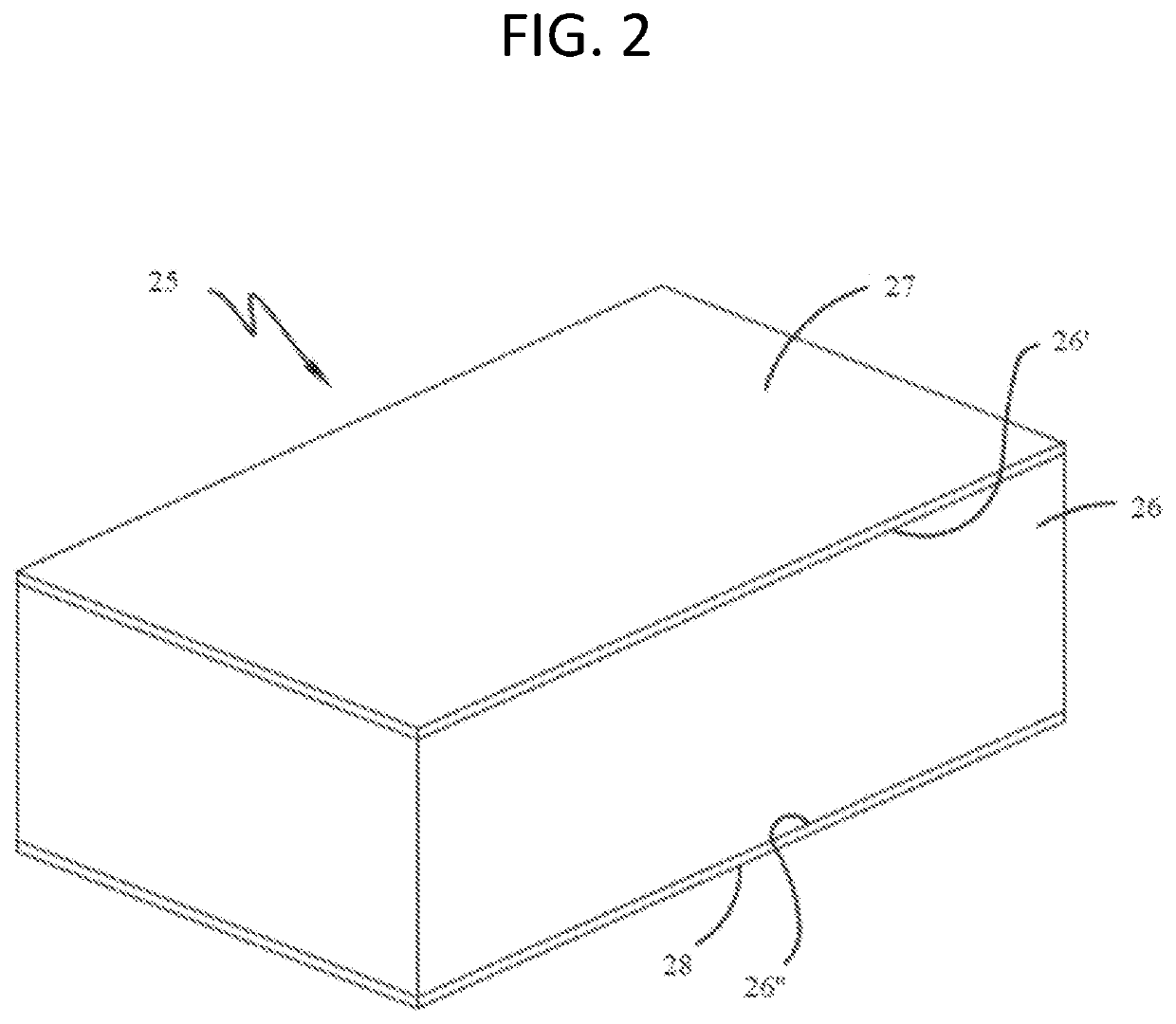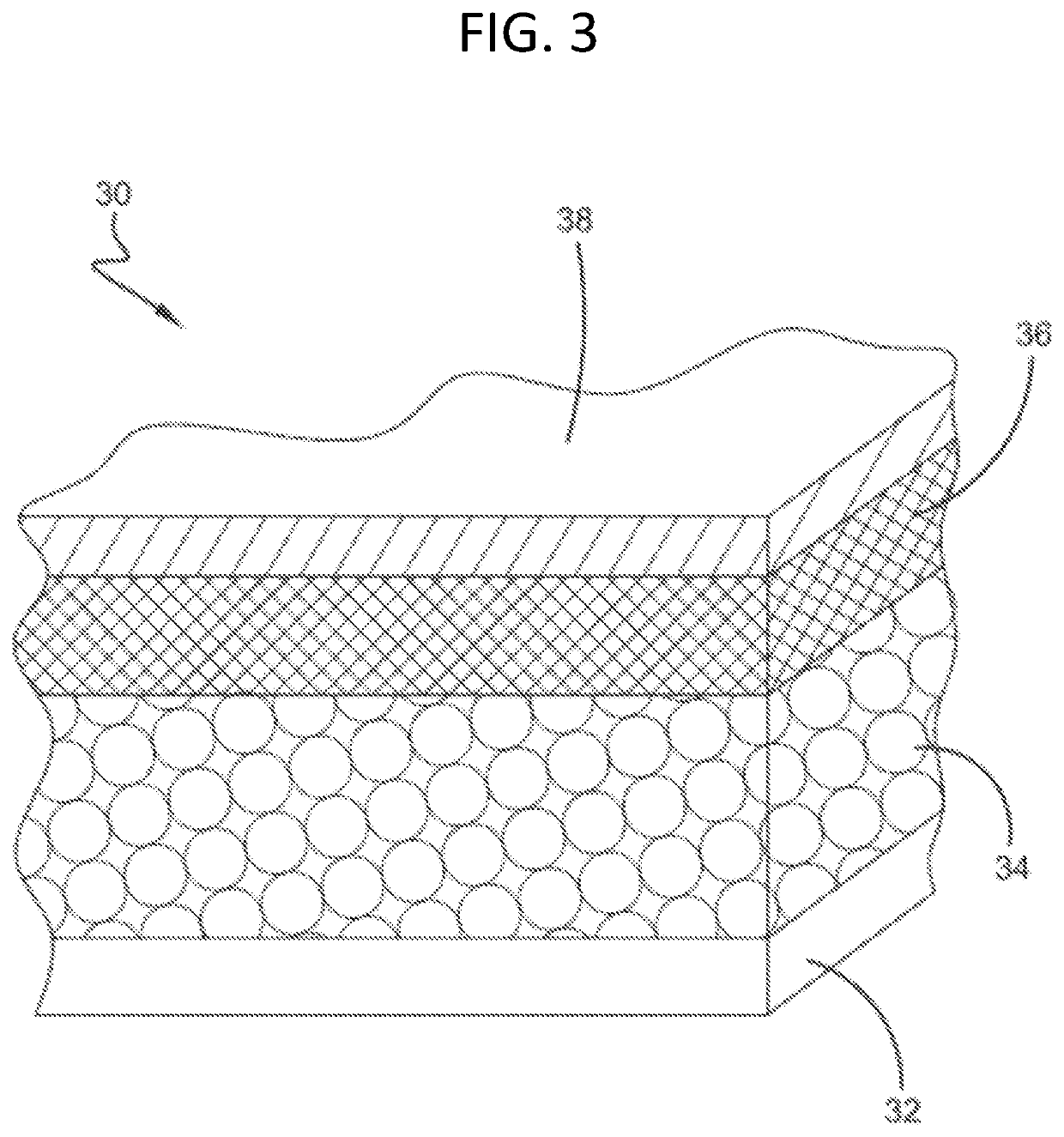Process for producing isocyanate-based foam construction boards
a technology of isocyanate-based foam and construction boards, which is applied in the direction of construction elements, layered products, other domestic articles, etc., can solve the problems of inferior compressive strength of construction boards, inadequate withstanding forces of construction boards, and affecting the insulating value of roof systems, etc., to achieve the effect of improving the r-value of construction boards
- Summary
- Abstract
- Description
- Claims
- Application Information
AI Technical Summary
Benefits of technology
Problems solved by technology
Method used
Image
Examples
examples
Samples 1-3
[0095]The following foam formulations were made and combined at laboratory scale to produce foam samples that were then tested for various properties, as will be discussed in greater detail below. The foams were prepared from two ingredient mixtures that included an A-side mixture and a B-side mixture. The A-side mixture included a polymeric isocyanate based upon diphenyl methane diisocyanate. The B-side mixture included 100 parts by weight aromatic polyester polyol, about 10 parts by weight liquid flame retardant, about 3 parts by weight metal carboxylate catalyst, about 0.3 parts by weight amine catalyst, about 2 parts by weight surfactant, about 0.25 parts by weight added water, and a physical blowing agent blend that included isopentane, n-pentane, and isobutane or n-butane. The amount of the isobutane and n-butane are provided in Table I. The A-side mixture and the B-side mixture were combined in relative amounts to provide foam having an index of 287. The amount of ...
PUM
| Property | Measurement | Unit |
|---|---|---|
| boiling point | aaaaa | aaaaa |
| boiling point | aaaaa | aaaaa |
| density | aaaaa | aaaaa |
Abstract
Description
Claims
Application Information
 Login to View More
Login to View More - R&D
- Intellectual Property
- Life Sciences
- Materials
- Tech Scout
- Unparalleled Data Quality
- Higher Quality Content
- 60% Fewer Hallucinations
Browse by: Latest US Patents, China's latest patents, Technical Efficacy Thesaurus, Application Domain, Technology Topic, Popular Technical Reports.
© 2025 PatSnap. All rights reserved.Legal|Privacy policy|Modern Slavery Act Transparency Statement|Sitemap|About US| Contact US: help@patsnap.com



